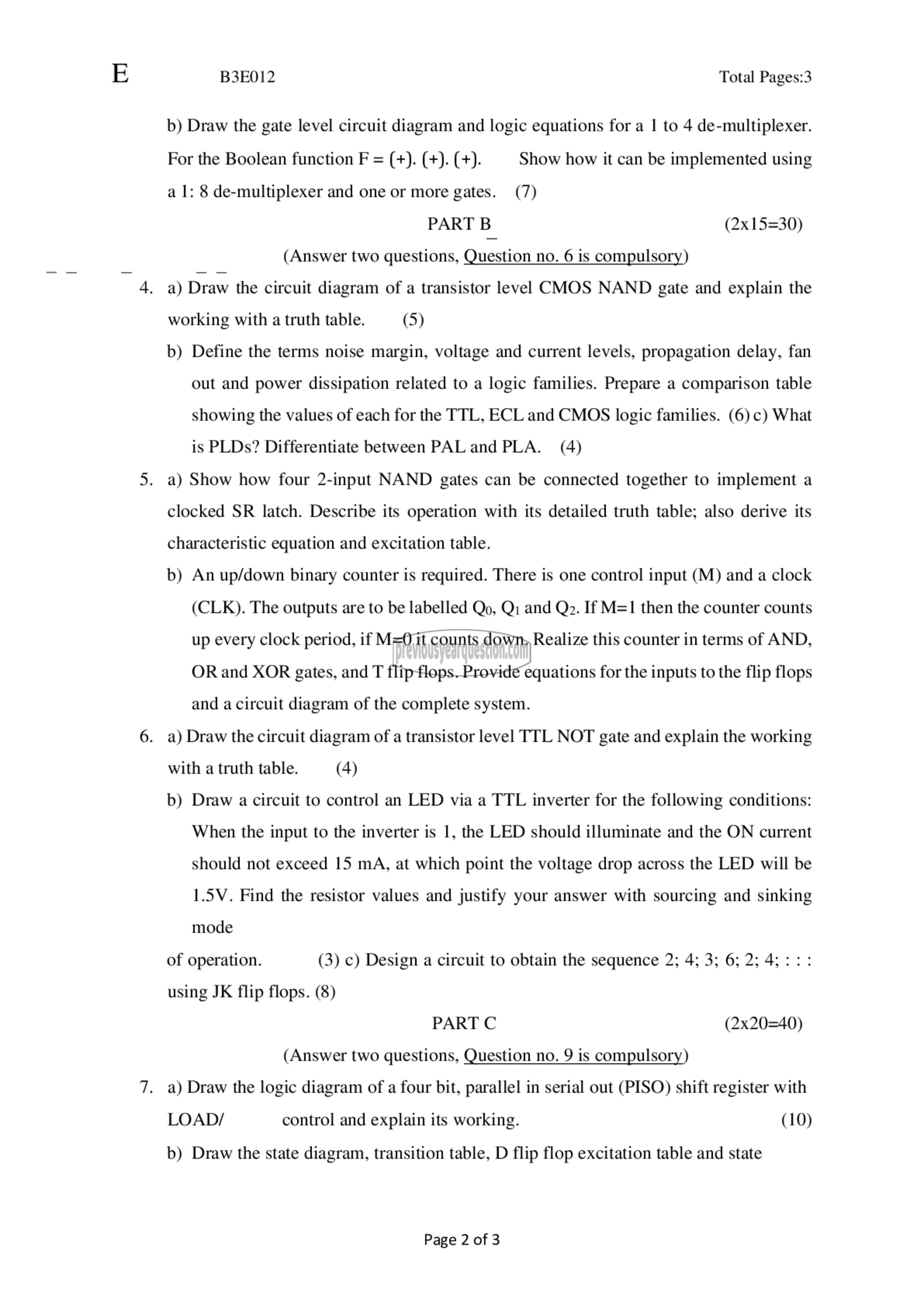APJ ABDUL KALAM TECHNOLOGICAL UNIVERSITY Previous Years Question Paper & Answer
Semester : SEMESTER 3
Subject : Logic Circuit Design
Year : 2017
Term : JANUARY
Scheme : 2015 Full Time
Course Code : EC 207
Page:2
B3E012 Total Pages:3
b) Draw the gate level circuit diagram and logic equations for a 1 to 4 de-multiplexer.
For the Boolean function F = (+). (+). (+). Show how it can be implemented using
a 1: 8 de-multiplexer and one or more gates. (7)
PART B (2x15=30)
(Answer two questions, Question 10. 6 18 (۲مول وہہ no. 6 is compulsor
. ൭) Draw the circuit diagram of a transistor level CMOS NAND gate and explain the
working with a truth table. (5)
b) Define the terms noise margin, voltage and current levels, propagation delay, fan
out and power dissipation related to a logic families. Prepare a comparison table
showing the values of each for the TTL, ECL and CMOS logic families. (6) 0) What
is PLDs? Differentiate between PAL and PLA. (4)
. a) Show how four 2-input NAND gates can be connected together to implement a
clocked SR latch. Describe its operation with its detailed truth table; also derive its
characteristic equation and excitation table.
b) An up/down binary counter is required. There is one control input (M) and a clock
(CLK). The outputs are to be labelled Qo, Qi and 02. If M=1 then the counter counts
up every clock period, if M=0 it counts down. Realize this counter in terms of AND,
OR and XOR gates, and T flip flops. Provide equations for the inputs to the flip flops
and a circuit diagram of the complete system.
. a) Draw the circuit diagram of a transistor level TTL NOT gate and explain the working
with a truth table. (4)
b) Draw a circuit to control an LED via a TTL inverter for the following conditions:
When the input to the inverter is 1, the LED should illuminate and the ON current
should not exceed 15 mA, at which point the voltage drop across the LED will be
1.5V. Find the resistor values and justify your answer with sourcing and sinking
mode
of operation. (3) c) Design a circuit to obtain the sequence 2; 4; 3; 6; 2; 4: : : :
using JK flip flops. (8)
PART ^ (2x20=40)
(Answer two questions, Question no. 9 is compulsory)
. a) Draw the logic diagram of a four bit, parallel in serial out (PISO) shift register with
LOAD/ control and explain its working. (10)
b) Draw the state diagram, transition table, D flip flop excitation table and state
Page 2 of 3
